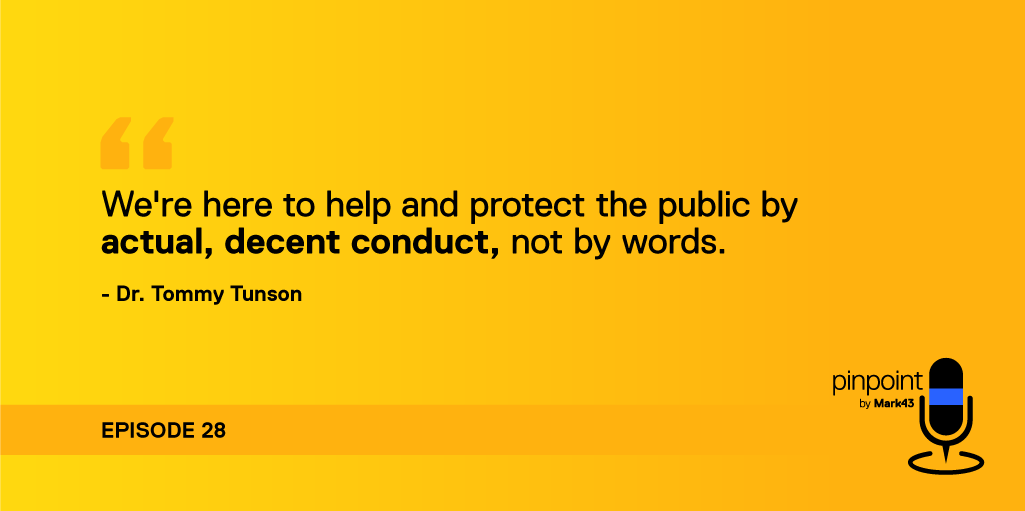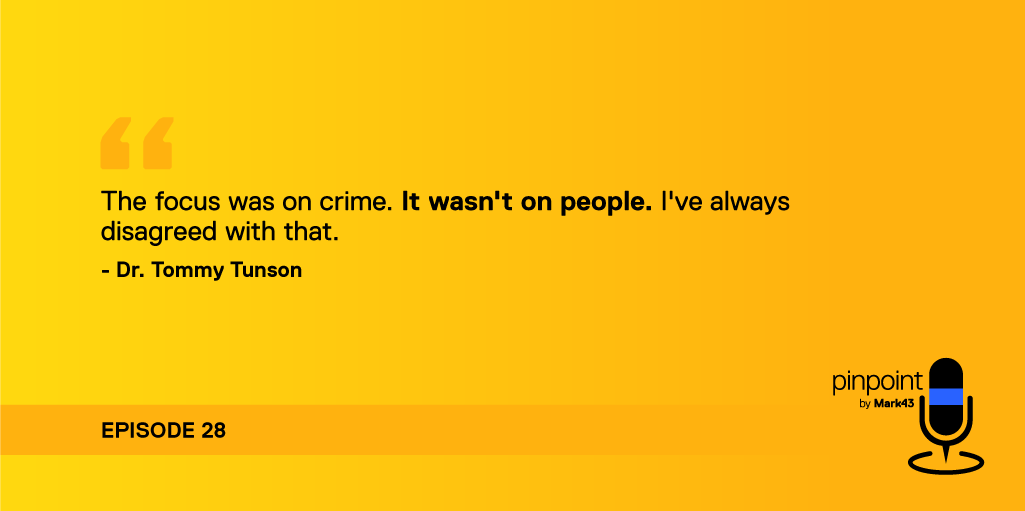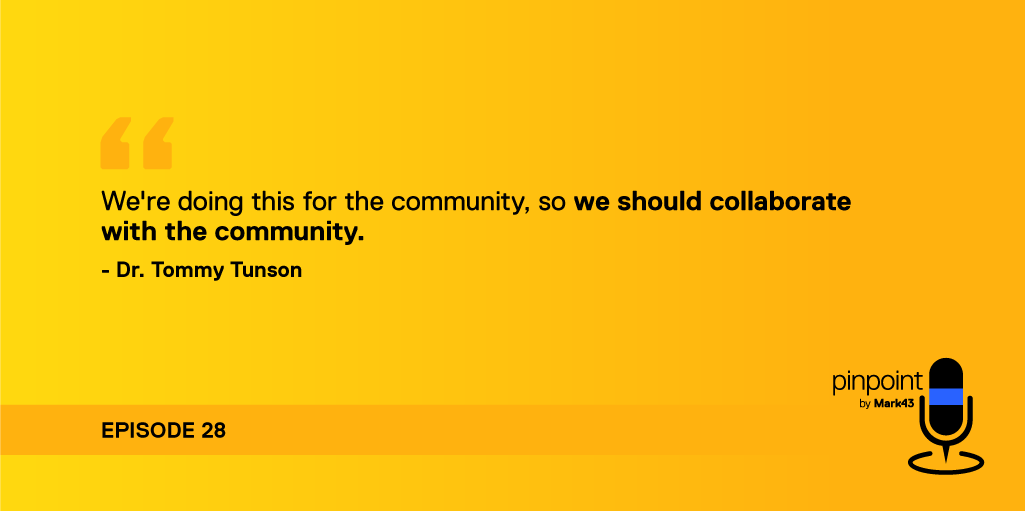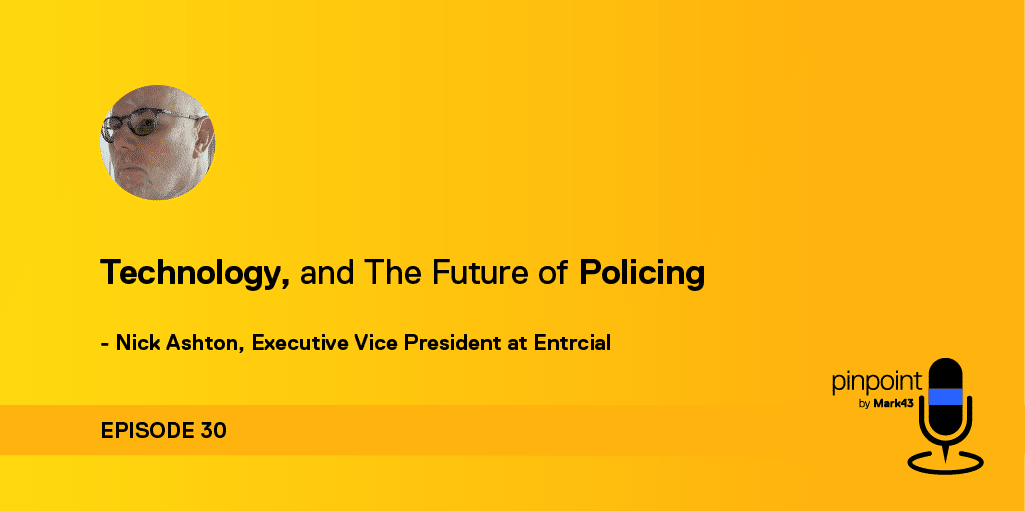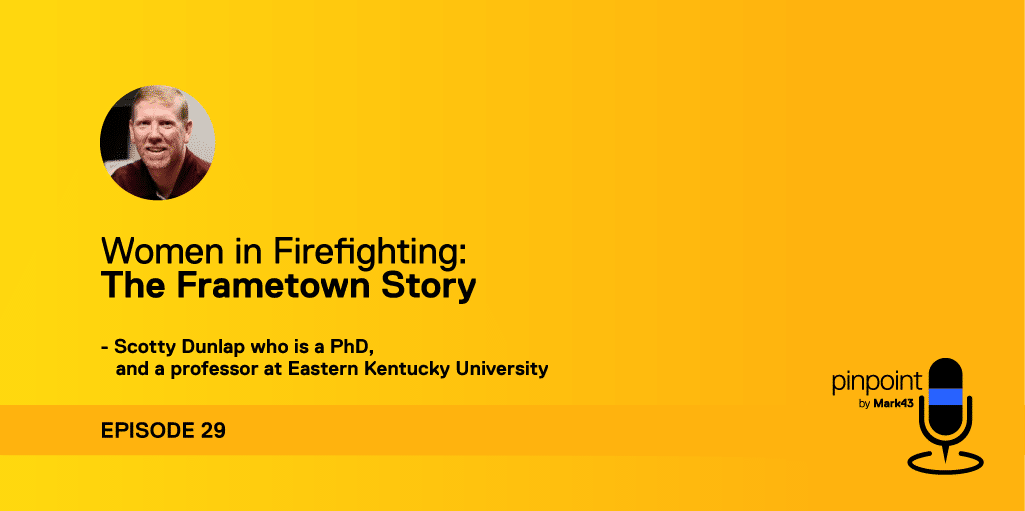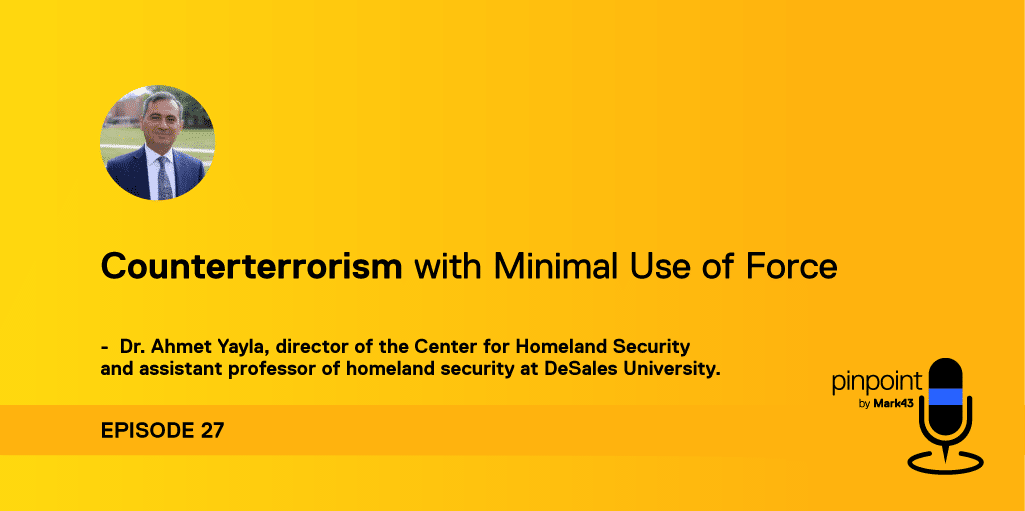Ep 28: A Transformational Policing Model Based on Community & Education w/ Dr. Tommy Tunson
Kristen Goode | 01 September 2020 | 4 minute read
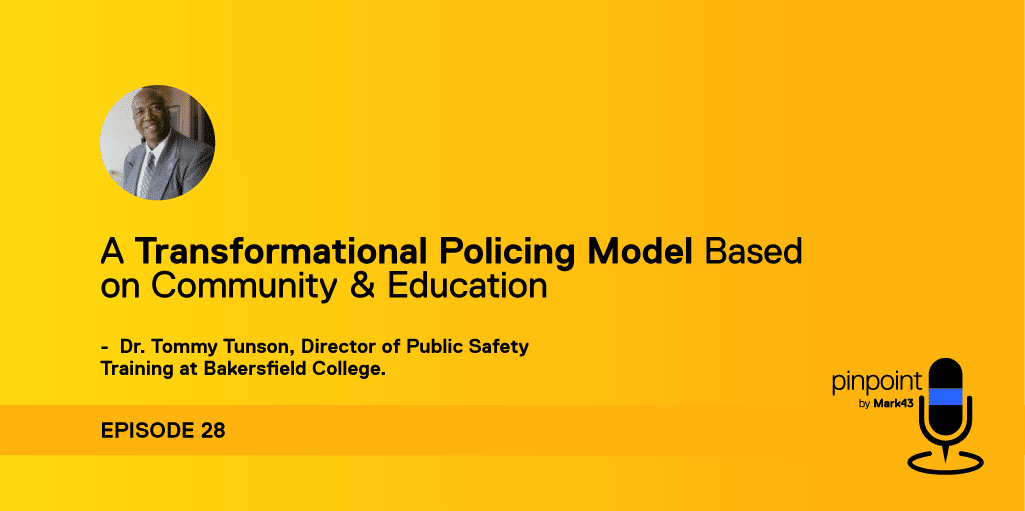
Imagine that you were stopped as a robbery suspect by the police as a teenager.
They beat you up, called you the N-word, and took you to jail without booking you.
How likely are you to commit your life to law enforcement?
(function() { var qs, js, q, s, d = document, gi = d.getElementById, ce = d.createElement, gt = d.getElementsByTagName, id = 'soun_der', b = 'https://embed.sounder.fm'; if (!gi.call(d, id)) { js = ce.call(d, 'script'); js.id = id; js.src = b + '/embed.js'; q = gt.call(d, 'script')[0]; q.parentNode.insertBefore(js, q);}})();
I was recently joined on Pinpoint by Dr. Tommy Tunson, Director of Public Safety Training at Bakersfield College. With over 30 years in law enforcement, he has been a chief of police, lieutenant colonel in the army, college professor, and associate dean.
Tommy wanted to become a police officer since his childhood — even when he was arrested as a teenager without cause in the story above.
“I’m going to become a cop,” he said. “People cannot be treated like this, especially American citizens.”
We talked about police reform and transformation, specifically about his transformational policing model and a return to community policing.
Tommy credits his parents with giving him the commitment to fight for change. “Black people have always had to struggle, they’ve always had to fight. If you cop out, then that’s it. Change will not come,” he said.
Transformational policing model
The transformational policing model derived from community-oriented policing.
As a young police officer, Tommy would visit schools and take the time to understand the community of his patrol.
He noticed that though every mission statement of every U.S. police department says it believes in community policing, most don’t practice it. (He proved this in his dissertation.)
“Line level officers do not want to take time to be social workers with guns,” he said. “They want to arrest people and build up their stats.”
As a police officer, police unions challenged Tommy’s community-focused model. “We’re not here for ourselves,” he said. “We’re here to help and protect the public by actual, decent conduct, not by words.”
Tommy’s transformational policing model has two prongs:
1. Collaborative community cultural coaching (“C4”)
“We’re doing this for the community, so we should collaborate with the community,” he said.
The first prong of the model speaks to the cultural aspects of police history that we’ve forgotten or underestimated.
(Case-in-point: The word cop derives from England from the phrase “constable on patrol.”)
2. Criminal justice education
What is affirmative action? What was the Emancipation Proclamation? Brown v. Board of Education? NAACP? What are the Jim Crow laws?
“The average American could not answer those questions,” he said.
The second prong of the model explains, for example, the exact definition of “murder” and what is needed to secure a murder conviction.
Tommy said that the community’s distrust of police officers lies in large part because the police chased runaway and escaped slaves during the Civil War era.
Generationally, slavery was very recent. Tommy recalled his grandmother telling him that her grandfather was beaten and mistreated by police.
“Her grandfather was a slave. She’s telling me in 1973 about how he was treated. Multiply me times 10 million Black people,” he said.
The model in practice
Tommy presented the transformational policing model to 25 police officers and 25 community leaders in Sacramento after the shooting of Stephon Clark in 2018.
During the training class, Tommy instructed police command staff and city officials in the underlying symbolism that divides police and the community.
He also required that a police officer and community member sit together at each table.
“You should have heard the discussions, very moving,” he said.
At the end of the day, he asked his students to summarize what they learned.
Police
I did not realize that community members felt that way about me, that they distrust me because I symbolize oppression, discrimination, all those negative symbols of American jurisprudence. Why aren’t we taught this in the academy?
Community
The police actually care. They’re actually trying to do something. I never realized the scrutiny that they’re under when they get into a shooting.
Community members are opening up to police officers, and police officers are opening up to community members.
That’s the purpose of the transformational policing model: coaching and education.
Among his class members, high-level police officers did not know what Brown v. Board of Education was. Black community leaders did not understand what segregation really meant.
“Today, that gap of knowledge — that cultural gap — is widening. I want to bridge that gap before it gets away from us,” Tommy said.
He is working to implement TPM training throughout California. He’s proud that his college president has also included racial equity among Bakersfield College’s core values.
“I heard Dr. King talk on TV. I’m honored to be in position to do my part to help America move forward,” he said.
Connect with Dr. Tunson on LinkedIn or through his university email. Keep an eye out for his book, The C.O.P., forthcoming in August 2020.
This blog post was taken from a Pinpoint podcast interview with Dr. Tommy Tunson of Bakersfield College.
To find every episode, click here. Or, for Apple Podcasts users, you can also use this link.


